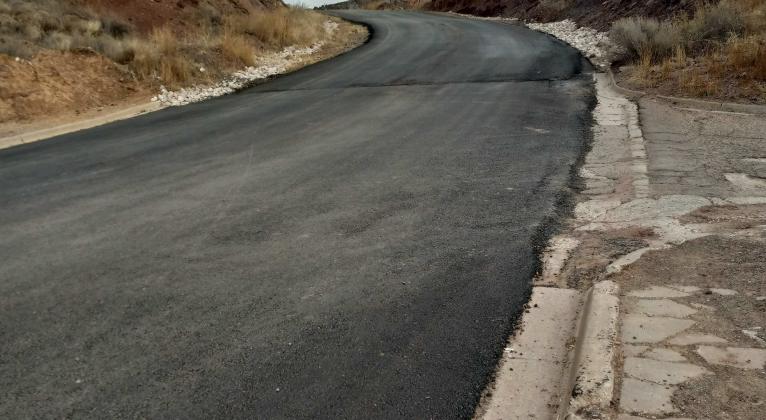GRANTS, N.M. – Roads in Grants are a complicated network and repairing the roads carries equally complex issues. City Manager Donald Jaramillo stated there are many factors to fixing roads. The city has state roads used to access other state roads, city roads that lead to state roads, and city streets. Roosevelt Ave, First Street, and Second Street are state roads within Grants. City Manager Jaramillo then pulled out two thick notebooks, one for budgeting, and another consisting of the roads in which Grants is responsible.
Manager Jaramillo discussed the efforts it takes to receive funding. Most repairs are done regularly and involve matching funds. Various funds were mentioned. The Transportation Project Fund (TPF) is a five percent match. Municipal Arterial Program (MAP) is a 25 percent match, and the Local Government Road Fund also matches 25 percent.
City Manager Jaramillo said the state gas taxes, the extra tax paid at the gas pump, goes into the state budget for road repairs, and the City of Grants receives between $500,000-700,000 annually in the form of funding. This money is used for equipment, asphalt, road maintenance, and drainage.
He went on to give examples of some roads recently fixed with gas tax money: Zuni Canyon, Gunnison, Lava, and High Street were the roads repaired with this funding.
Manager Jaramillo quoted last year’s gas tax budget as $770,000. The city’s part for road maintenance and repair is one million dollars. Jaramillo also stated that Washington Ave, Nimitz Dr., and the pedestrian trail that will loop around Grants High School are slotted for funding which will run between twoto-three million dollars.
When asked about pothole patching, Jaramillo said there is regular maintenance on potholes in the city, however, vendor production and weather play a role in pothole repair. During winter months he said, the vendor stops production because the need for asphalt drops significantly. The vendor makes asphalt for the city, county, and state road departments, and making asphalt for one entity is not productive. The city manager also stated there are two types of repair mix. Cold temperature mix is a shortterm fix and hot mix which is used for longterm pothole patching.
When asked if residents want to install speed bumps on their street, he said those requests go through the City Code Enforcement Office and require a particular process, one involving a neighborhood petition.
Mr. Jaramillo said street repair goes beyond just picking a street and fixing it because there are numerous processes and procedures the city must run through before repairs can begin. He said, the office of the city manager, public works director, and road department supervisor are consulting with the city council. “We are working on a budget for streets to be repaired and then taking it to the council.”

